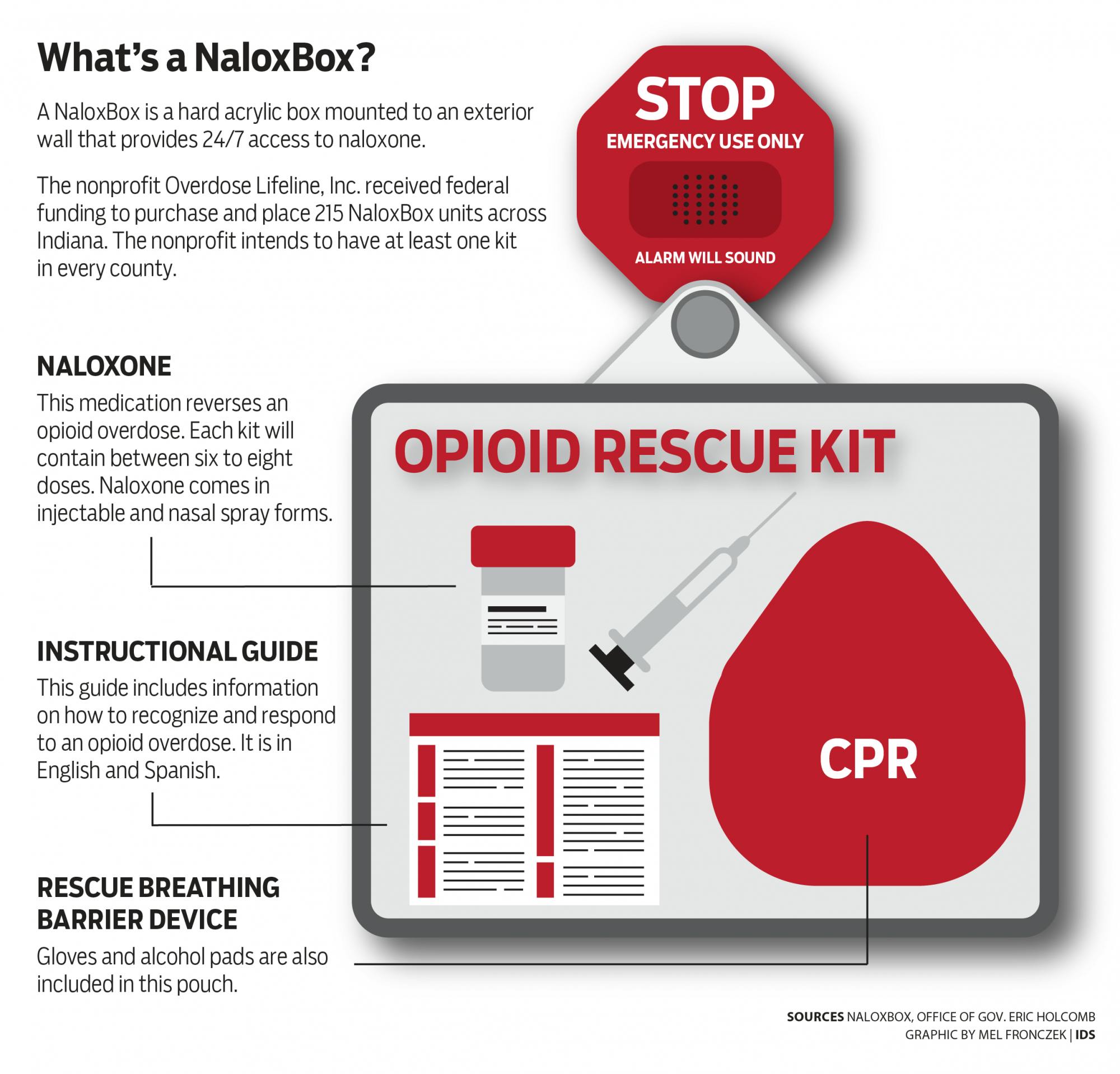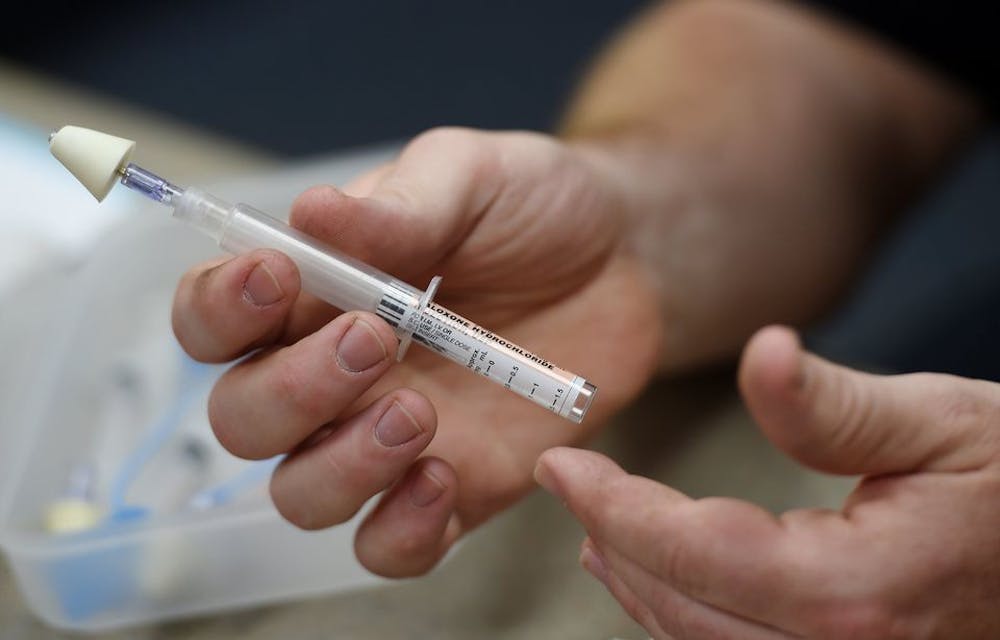Indiana is partnering with Overdose Lifeline to make naloxone, an opioid overdose reversal medication, publically accessible at all hours. Gov. Eric Holcomb announced the initiative on Feb. 5, pledging to use federal grant money to plant at least one NaloxBox in every county in Indiana.
According to the governor’s press release, each NaloxBox contains six to eight doses of naloxone, often referred to by the brand name Narcan, as well as instructions and treatment referral cards. According to NaloxBox, some units also come equipped with an alarm that sounds upon opening the box. A NaloxBox is a clear, hard box that can be mounted on external walls, similar to fire alarms.
The NaloxBoxes will be installed in highly visible and easily accessible locations, said the press release. Holcomb said making the medication more available will allow civilians to act when they witness an overdose, potentially saving lives and combating the drug epidemic.

“We’re committed to raising awareness about the need for bystanders to carry this life-saving drug, which is why we’ve made it available via so many avenues, oftentimes at no cost to Hoosiers,” Holcomb said in the press release.
Any business or community space is eligible to apply for a NaloxBox by contacting Justin Phillips, founder and director of Overdose Lifeline. Many of the current NaloxBox locations are only accessible during business hours or require going to places that may feel judgemental, such as health departments, Phillips said.
“We really want them to be in a neutral non-intimidating space,” Phillips said.
In Bloomington, the Monroe County Health Department offers free naloxone nasal spray at 119 W 7th St. According to the Monroe County website, some pharmacies are registered to distribute naloxone and the Indiana Recovery Alliance provides injectable naloxone at certain hours or by appointment.
Overdose Lifeline, an Indiana nonprofit dedicated to destigmatizing and treating addiction, will buy 215 NaloxBoxes with $58,200 provided by the federal Substance Abuse and Mental Health Services Administration’s state opioid response grant, according to the press release. Phillips said Overdose Lifeline is also responsible for distributing NaloxBoxes across the state with at least one NaloxBox in all 92 counties.
According to the group’s website, Phillips founded Overdose Lifeline in 2014 after her son died of a heroin overdose. Phillips said Overdose Lifeline advocated for the legalization of over-the-counter naloxone and succeeded in 2015 with the creation of Indiana Aaron’s Law, named for his son. Phillips said Overdose Lifeline strives for increased public naloxone availability.
“It’s important for naloxone to be accessible without a barrier,” Phillips said. “This eliminates barriers because you don’t have to engage or interact with any human at all.”
According to the press release, the business hosting the NaloxBox will be responsible for monitoring usage and requesting refills.
While the main objective of the initiative is preventing overdose deaths, it also aims to educate the public on the severity of drug use and start conversations regarding addiction. People should not be afraid to get help, Phillips said.
“I just hope that more people have access to the overdose reversal drug without having to feel shame or stigma,” Phillips said.






